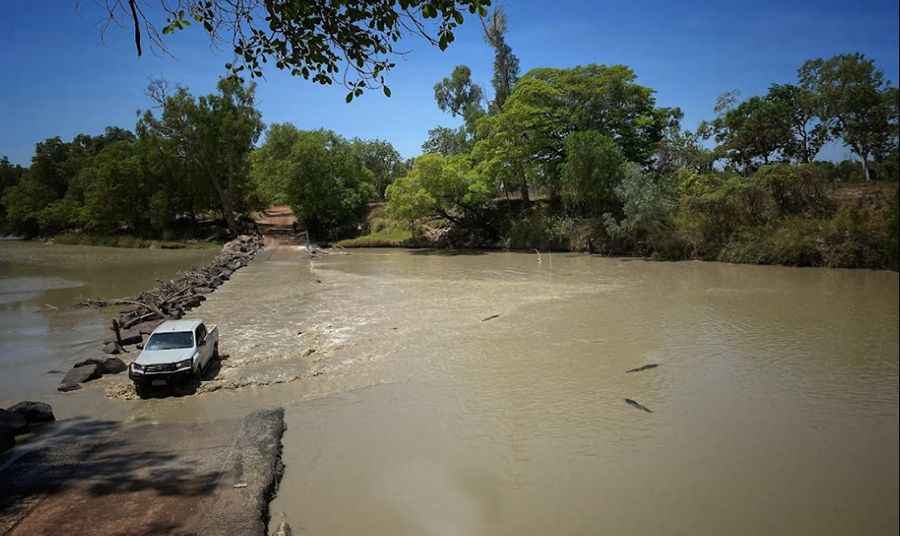The Cahills crossing isn’t for you (if you’re worried about being eaten by crocodiles)
Located in the Northern Territory of Australia, the infamous Cahills crossing is a notorious flooded causeway river crossing with abundance of saltwater crocodiles. Visiting Cahills Crossing is not for the faint of heart. For your safety do not enter the water. It’s one of the most dangerous bridges in the world.

Where is Cahills Crossing?
This small, narrow concrete bridge crossing the East Alligator River is located in the Northern Territory, within the Kakadu National Park. It’s approximately a 3.5 hour drive east of Darwin. A high clearance 4wd vehicle with a snorkel is required.
Is the road to Cahills Crossing sealed?
The bridge carries the paved Arnhem Highway/Oenpelli Road. It’s totally navigable by all passenger vehicles, unless the crossing part.
Why do people cross Cahills Crossing?
It offers the only road access point between Arnhem Land and Kakadu National Park. The bridge was built in the 1960’s. As you approach Cahills Crossing, you’ll see two or three abandoned cars downstream.
Who is Cahills crossing named after?
The shallow causeway is named after Paddy Cahill (1863–1923), a legendary buffalo hunter. It’s said to be one of the Most Dangerous Crossing in the World. For your safety do not enter the water. To walk across the crossing is just foolishness. Each year, dozens of drivers attempt to make it across the submerged crossing but instead end up being washed away into the saltwater crocodiles infested waters. Many online videos show drivers who attempted to cross and failed to make it.
Has anyone died at Cahills Crossing?
Only a few metres wide, it’s an inherently dangerous place, with more than 20 crocodiles per kilometer. That’s one of the highest density of saltwater crocodiles in Australia. The crossing is very dangerous and there have been several fatalities in the area so far. Many have lost their lives, including fisherman, children, photographers, and backpackers.
When can you cross Cahills Crossing?
The best time to face this famous outback river crossing is around low tide. It’s usually closed during the wet season (from December to May), when the water levels are far too high for crossing. The dry season (from May to October) provides greater windows for crossing the causeway at a safe level. Occasional rain causes the water level to rise quickly. And the current can be too strong for your car which can mean you float into the river.
Road suggested by: jorge manuel gómez sánchez
Pic: Jo Gordon